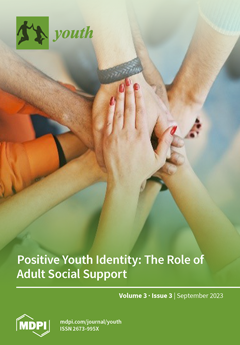Despite its importance, physical literacy has received scant scholarly attention, notwithstanding the obvious link between physical activity and health promotion (including but not limited to mental health). The purpose of this study was threefold: first, to explore the self-perceived physical literacy, the self-reported
[...] Read more.
Despite its importance, physical literacy has received scant scholarly attention, notwithstanding the obvious link between physical activity and health promotion (including but not limited to mental health). The purpose of this study was threefold: first, to explore the self-perceived physical literacy, the self-reported physical activity, and the mental health status of adolescents who study in secondary education schools in Cyprus and the potential association of those variables; second, to explore any potential statistically significant gender differences across the variables under examination; and third, to explore whether there is a mediating role of physical activity in the relationship between adolescent Cypriots’ physical literacy and their mental health in the post-quarantine period. A total of 285 students, aged 13–18, from regular middle and high schools in Cyprus participated in this study. Physical literacy was measured using the Perceived Physical Literacy Instrument (PPLI). The Depression, Anxiety, and Stress Scale-21 (DASS-21) was utilized to measure mental health status. Physical activity was measured using the Physical Activity Questionnaire for Adolescents (PAQ-A). Independent sample
t-tests were computed to analyze gender differences. The Pearson correlation test was used to compute bidirectional associations between research variables. Structural equation modeling was used to assess structural associations between research variables. The findings revealed statistically significant differences among boys and girls on depression (
p = 0.0032), anxiety (
p = 0.008), and stress levels (
p = 0.003). Statistically significant and negative correlations had been found among PL and depression, anxiety, and stress levels (all
p < 0.001), while PL was significantly and positively associated with physical activity (
p < 0.001). Despite having only indirect effects on mental health (b = 0.51, T = −10.11,
p < 0.001), physical literacy was found to have substantial direct effects on physical activity levels (b = 0.46, T = 8.66,
p < 0.001). In addition, physical activity has significant indirect effects on mental health (b = 0.19, T = 5.48,
p < 0.001). In summary, physical activity has significantly mediated the associations between physical literacy and mental health. Given these findings, it is important to put strategies in place to build up physical literacy and increase physical activity among Cypriot adolescents.
Full article




